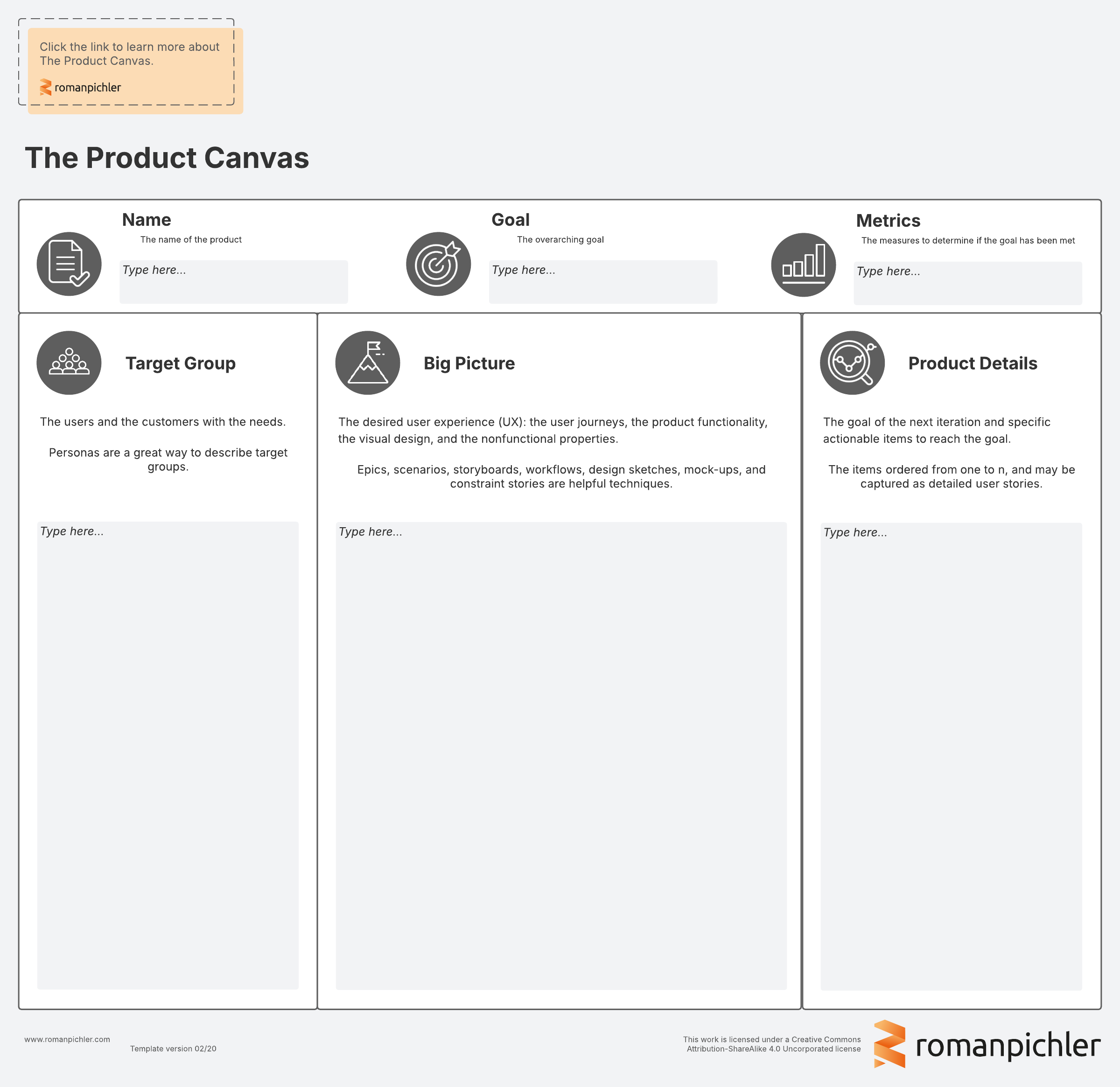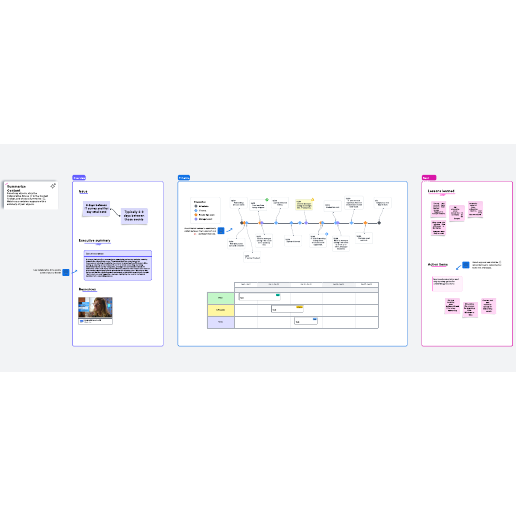Product canvas template
This template works on the following products:
*For all Lucid plan types

Combining agile and UX practices, Roman’s Product Canvas replaces a traditional product backlog by helping you create a product with a great user experience and the right features.
What is the product canvas template?
Products always begin with ideas. Sometimes those ideas are so massive that they need some constraints to become a reality. Other times, the ideas are just beginning, which means they need a strategy to become viable. No matter where your product is in its creation story—even if it’s already in development—it can benefit from Roman Pichler’s product canvas template.
This template will help you create a strategically smart product that has all the right features for your users. The product canvas template can even replace a traditional product backlog, making your future sprints more intentional as they address the most beneficial features first.
Benefits of using the product canvas template
- Plan a new product. Identify a smart path to developing a product that users genuinely want.
- Conserve resources. Rather than try to develop a hundred features at once, plan for the features that make the most impact now.
- Come up with relevant, new features. By better understanding your customers, you can better develop a product that addresses their pain points and needs.
How to use the the product canvas template in Lucidspark
- Start by naming your product. Then determine its overarching goal and what measurements you’ll use to determine if the goal has been met.
- Next, identify your target group, or the users whose needs you’ll be meeting. Personas are a great way to describe target groups.
- Then, determine what you want your user to experience. Think of user journeys, product functionality, visual design, and nonfunctional properties. This is a great time to utilize Breakout Boards as you develop workflows, storyboards, sketches, and other ways to describe the big picture of your product. Set a timer to keep the discussion going.
- Finally, detail your product, including goals for the next iteration and how you’ll reach those goals. Tagging and Collaborator Colors are useful here as you determine the next steps for your product.

Roman Pichler
Roman Pichler is a leading product management expert specialized in digital products and agile practices. He teaches product managers and product owners, advises product leaders, and helps companies create successful product management organizations.
Roman is the author of three books on product management and one on Scrum. He writes a popular blog, hosts his own product management podcast, and offers a range of free product management tools. Check out Roman’s site to learn more about his work.



